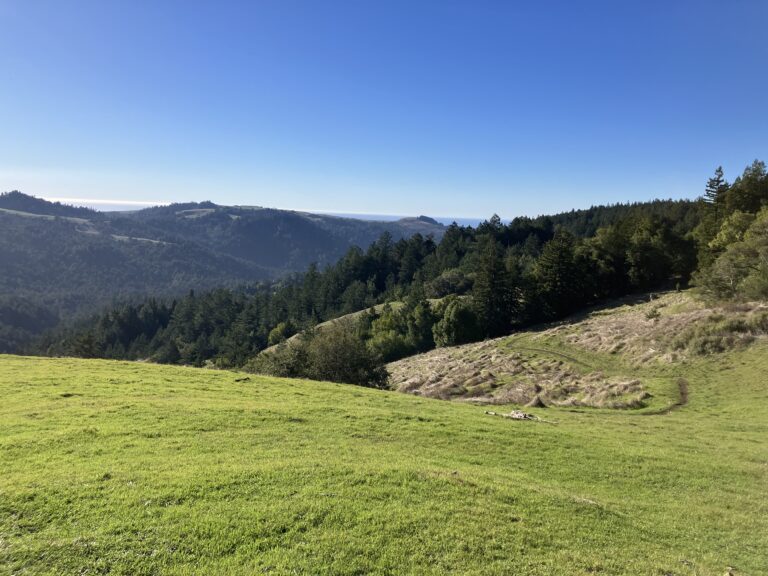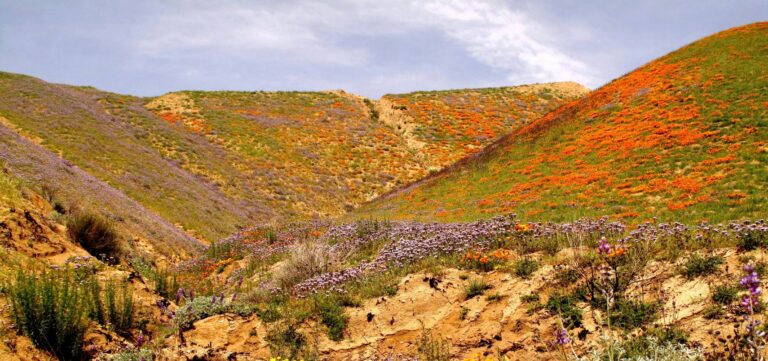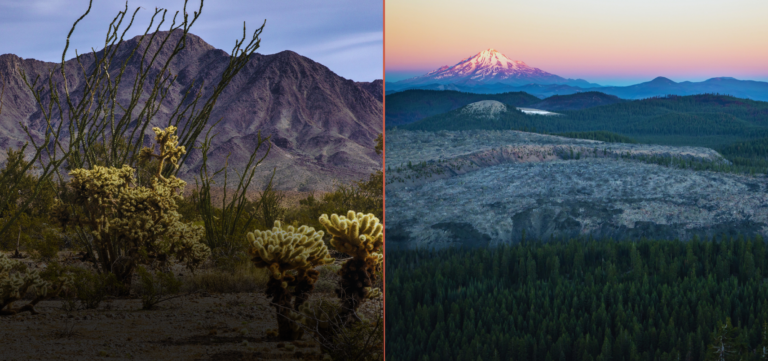FOR IMMEDIATE RELEASE
October 28, 2024
Contact: Stefanie Lao, (818) 261-6871, stefanie@fcpcommunications.com
At United Nations Conference, California Leaders Highlight Urgent Need to Protect Biodiversity
Cali, Colombia — California state leaders, Tribal representatives, scientists, and advocates today called attention to the urgent need to protect biodiversity, the state’s leadership and progress, and time-sensitive opportunities to designate national monuments. This call to action took place at an event in Cali, Colombia, during the 16th United Nations Conference on Biological Diversity (COP16).
“California is a leader and ready partner in the global movement to conserve and restore nature,” said California Natural Resources Agency Secretary Wade Crowfoot. “We have made significant progress towards conserving and restoring our state’s lands and coastal waters. We’ve done this while prioritizing equitable access to nature, meaningful Tribal engagement, and an inclusive, community-based approach. This is progress, and we know that we need to do more.”
Scientists worldwide agree that in order to curb extinction rates and prevent the most severe impacts of climate change, we must – at a minimum – protect at least 30% of the planet’s lands and coastal waters by 2030 (a goal referred to as 30×30). The focus of COP16 is the implementation of the 2022 Kunming-Montreal Global Biodiversity Framework, which established 23 targets to protect nature, including a global 30×30 goal.
Since Governor Newsom committed California to the 30×30 goal in 2020, the state has made significant progress, with 25.2% of its lands and 16.2% of its coastal waters conserved.
“I’m fortunate to represent California’s Bay Area, where coastal waters and biodiversity are just minutes away from even the most urban areas,” said Assemblymember Matt Haney (AD-17). “I see firsthand both the urgency and the opportunity to realize California’s combined goals for a healthy economy, innovative technology, access to nature, and biodiversity protection.”
To build on California’s momentum, Tribal representatives, elected officials, and scientists are calling on the Biden administration to advance public lands protections, invest in transformational conservation projects and programs, and honor Tribal priorities. These Tribal priorities include the proposed designation of three new national monuments in the state in order to protect cultural landscapes and biodiversity.
In the California Desert, this includes the proposed Kw’tsán National Monument and Chuckwalla National Monument. The proposed Kw’tsán National Monument would protect more than 390,000 acres in Imperial County. The proposed Chuckwalla National Monument includes approximately 644,000 acres of public lands in Riverside and Imperial Counties.
“For us, protecting biodiversity is about more than protecting the environment,” said Lena Ortega, Kw’tsán Cultural Committee Member, Fort Yuma Quechan Indian Tribe. “Our culture, spirituality, and identity are connected to the ecosystems our people have inhabited for thousands of years. If a species goes extinct, if a mountain is destroyed by mining, if a river runs dry due to over-extraction – that is the same thing to us as losing a relative or having someone close to us harmed. We lose a part of ourselves and our history. We are here at COP16 to ensure our voices are being heard as we call for the proposed Kw’tsán National Monument and Chuckwalla National Monument – and to help amplify the voices of global Indigenous communities who are in the same fight as us to preserve our culture for future generations.”
In Northern California, the Pit River Nation is calling for the designation of the proposed Sáttítla National Monument. This would protect over 200,000 acres of culturally significant, ecologically rich, and geologically unique land within the Shasta-Trinity, Klamath, and Modoc National Forests in northeastern California.
“For too long, the world has treated Indigenous voices like a footnote in the climate debate, ignoring our deep connections and knowledge of our homelands,” said Brandy McDaniels, Lead, Sáttítla National Monument Campaign, Pit River Nation. “But at COP16, we’re making it clear—our fight to protect our Ancestral homelands since time immemorial is a global fight. Whether it’s California or Colombia, we’re all facing the same biodiversity and climate crises while continuing to defend our sacred homelands from being industrialized, exploited, and disregarded. We hope the Biden administration, and leaders worldwide, leave this gathering with a renewed sense of urgency and a commitment to turn these vital conversations into action, including protecting places like Sáttítla as a national monument.”
California is one of 36 global biodiversity hotspots and home to thousands of species of plants and animals, many of which are found nowhere else on Earth. This biological diversity is the foundation of the state’s ecosystems and economy – and essential for healthy human communities and resilience to climate change. California also has more imperiled species than any other state. Continued progress towards 30×30 and the other 22 Kunming-Montreal Global Biodiversity Framework targets is driven by the need to stem biodiversity loss and protect people and nature in the midst of climate change.
The California Global Biodiversity Working Group is a collaboration of organizations across California, founded in 2020 to bridge local efforts with global environmental goals, that has partnered with the state’s leadership to launch a story map of how Californians are enacting all 23 of the Kunming-Montreal Global Biodiversity Framework targets — from 30×30 to linking biodiversity and climate change — at every level.
“The biodiversity crisis does not know boundaries,” said Rosalind Helfand, Co-Founder, California Global Biodiversity Working Group, which led the coordination of California’s extended delegation to COP16. “To protect and restore the systems we depend on for life, health and a stable climate, Californians understand that we must partner with our global community and join critical global conversations to push ambition, learn, and expand our collaborations to increase inclusive action and engagement for the future of biodiversity in our state.”
California’s extended delegation includes over 100 people, including state leaders, Tribal representatives, scientists, and advocates on the ground in Cali, Colombia.
“California is proving that while the effort to preserve and protect biodiversity is challenging, it’s also achievable,” said Mike Young, Senior Political & Organizing Director, California Environmental Voters, which is a co-founder of the California Global Biodiversity Working Group. “Now is our chance to move from promising a better future to taking action and creating one.”
This significant delegation is emblematic of the work of hundreds of organizations and individuals who are championing local conservation projects and environmental justice to respond to the local and global biodiversity crisis and help meet California’s 30×30 goal.
“California is home to extraordinary plant life, from our magnificent redwoods to our desert super blooms,” said Dr. Jun Bando, Executive Director, California Native Plant Society, member of the Power In Nature coalition, and member of the California Biodiversity Network. “But our plants – and wildlife – now face some of the highest extinction rates in the world. California has built a movement that is redefining what conservation looks like and has already achieved great progress. We have an extraordinary opportunity to build on that momentum with the designation of additional national monuments this year. These are the kinds of bold actions that are urgently needed to protect biodiversity for our survival.”
# # #



